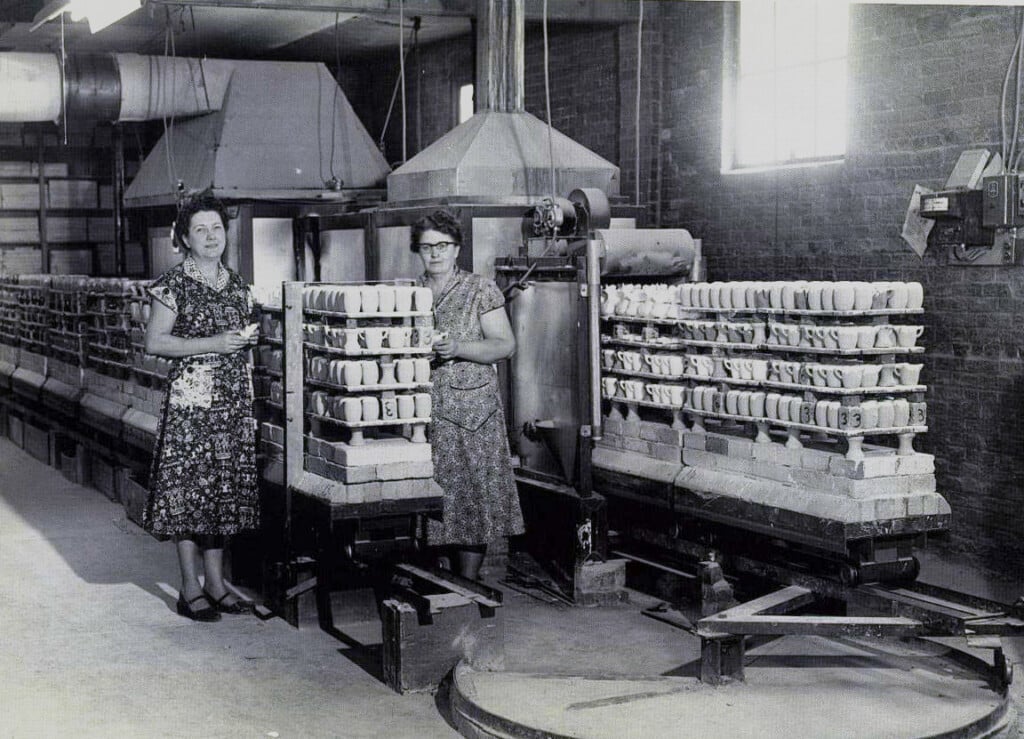Clay City: The Rise and Fall of Zanesville’s Pottery Industry

Decaying signs that read Pottery Capital of the World. Vasehenge. Abandoned pottery factories. Zanesville used to be ripe with the culture of ceramics, and the remains of that period of history are still visible. So, the question remains: What happened to the pottery capital of the world?
In 1808 Samuel Sullivan began Zanesville’s clay industry with rough bowls, plates, and other dinnerware. Sullivan later went on to become the fourth Ohio State Treasurer from 1820-1823.
What brought the pottery industry to Zanesville were the local clays and the easy access to transportation due to the railroads and the Muskingum River.
Three local potteries became known as the “Big Three”: Roseville Pottery, J.B. Owens Pottery and Weller Pottery. J.B. Owens was the first on the scene when it opened in 1885, followed by Weller and Roseville in 1890.
The pottery companies were a large part of the Zanesville economy. At its height, Roseville Pottery employed over 1,000 people, and in 1905, Weller Pottery’s 500-600 employees included decorators that were sent overseas to train in Europe.
The Big Three competed over the years with wages, designs and artists.
Artists moved between potteries due to competition for higher wages. Often, they took pottery secrets with them as they moved.
Three Weller artists (Frank Ferrell, John J. Herold, and Frederick H. Rhead) moved to Roseville upon the company’s opening. Ferrell took with him an idea that Samuel Weller had rejected, which later became the famous Pine Cone line at Roseville.
William Long took Weller’s standard glaze formula with him when he moved to J.B. Owens, where it became known as the Owens Utopian. At Roseville, the same glaze was called Rozane.
This duplication of glazes and designs was common, but it was not only the local potteries doing this. When Japanese wares began to hit the market in 1910, it spelled trouble for local companies.

The wares being imported from Japan were near perfect imitations of local designs and were being sold at half the cost. Japanese workers were being paid low wages, which allowed companies to undersell their American counterparts. As the Big Three were already in competition with higher wages, they weren’t able to compete with this new market.
When the Great Depression hit in 1929, potteries began to rethink how their products were being made.
At the time, Weller had three separate plants. During the Great Depression, these plants were consolidated into one plant.
As the price of materials rose, companies began to use cheaper alternatives. The higher wages and competition from abroad were other factors in this switch in materials.
Following World War II the competition from Japan and Europe soared. New lines created by local potteries were replicated and undersold by markets abroad.
J.B. Owens was the first to close when it stopped producing pottery around 1909. A 1902 fire destroyed most of the Zanesville plant, including all of the pottery models and molds. In 1907 the company was sold by Owens to a group of investors, and Owens began to produce pottery from his studio in New York.
Weller and Roseville hung on long enough to feel the effects of the post-WWII market.
Weller was sold in 1947 to the Essex Wire Company of Detroit, and the plant was ultimately closed in 1948.
Roseville was sold to the New England Ceramics Company in 1954, and all Roseville Pottery products stopped being produced.




